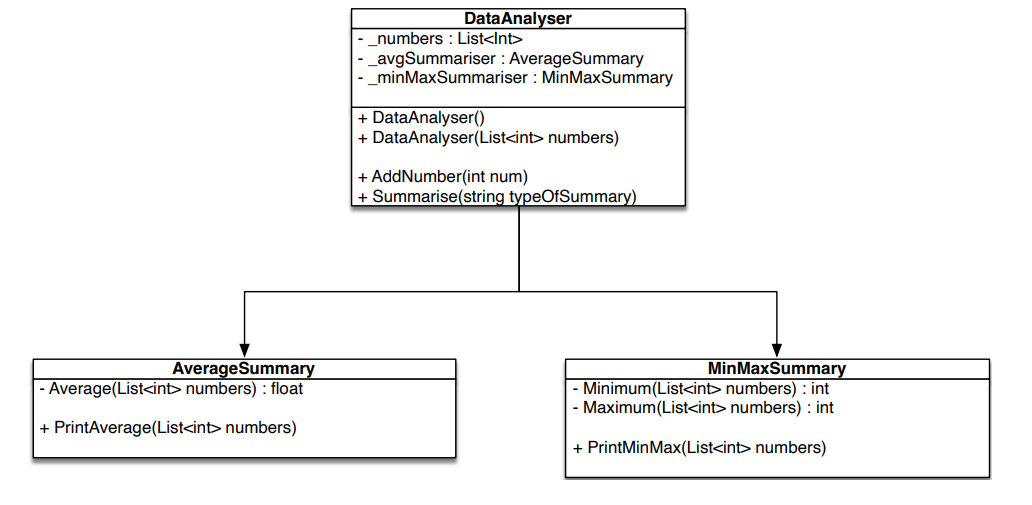(Solved): Object Oriented Programming Pass Task 8.1: Semester TEST Purpose: Demonstrate your understandi ...
Object Oriented Programming Pass Task 8.1: Semester TEST
Purpose: Demonstrate your understanding of object-oriented programming and the core concepts of object-oriented design.
Task: You must complete two tasks. The first is a coding task, to be submitted as C# source code files, a UML diagram, and a screenshot showing your program’s output. The second task asks for a written response, to be submitted as a PDF.
Submission Details You must submit the following files to Doubtfire:
? For Task 1: ? C# code files of the classes created ? An image file showing your modified design as a UML class diagram ? A screenshot of the program output
? For Task 2: ? A PDF document with your answer Make sure that you submit code that is readable and is appropriately documented.
Task 1 Consider the following program design:

To implement this new class and integrate it with our existing design, the following changes need to be made:
1. Implement the SummaryStrategy abstract class according to the above design.
2. Redesign the AverageSummary and MinMaxSummary classes to be child classes of the new SummaryStrategy class.
3. Modify DataAnalyser to have a private variable, “_strategy”, that is of the type SummaryStrategy.
4. Add a public property for this new private variable.
5. Modify the DataAnalyser constructors to:
a) allow the strategy to be set through a parameter
b) by default (i.e., if there are no parameters), set the strategy to the average strategy.
6. Modify DataAnalyser’s Summarise method to use the currently stored strategy instead of relying on a string parameter.
7. Write a simple Main method to demonstrate how your new design works:
a) Create a DataAnalyser object with a list of 10 numbers and the minmax summary strategy.
b) Call the Summarise method. c) Add three more numbers to the data analyser.
d) Set the summary strategy to the average strategy.
e) Call the Summarise method
Tip: Subclasses need to adhere to the requirements of the parent, but they can still add their own additional functionality. Consider how the code can be broken up so that the methods in your classes have just one purpose and no side effects.
You are required to:
a) Provide a new UML class diagram for your updated design (hand drawn is fine).
b) Write the code for all classes, including the SummaryStrategy abstract class, and all methods/fields/constructors required.
c) Write a simple Main method as described above. Submit a photo or image of your UML, all source code files, and a screenshot showing your program working to Doubtfire.
Task 2
1. Describe the principle of polymorphism and how it was used in Task 1.
2. Using an example, explain the principle of abstraction.
3. What was the issue with the original design in Task 1? Consider what would happen if we had 50 different summary approaches to choose from instead of just 2.
Tip: In object-oriented programming we have talked about the concepts of abstraction and abstract classes. Remember that they are different, and we are asking you to explain the first one!
Expert Answer
Note 1. For any other discrepancies in the code, please mention in the comments section and it will be resolved immediately. Part a) The UML Diagram The C# code SummaryStrategy.cs using System.Collections.Generic; namespace DataProcessor { publi
